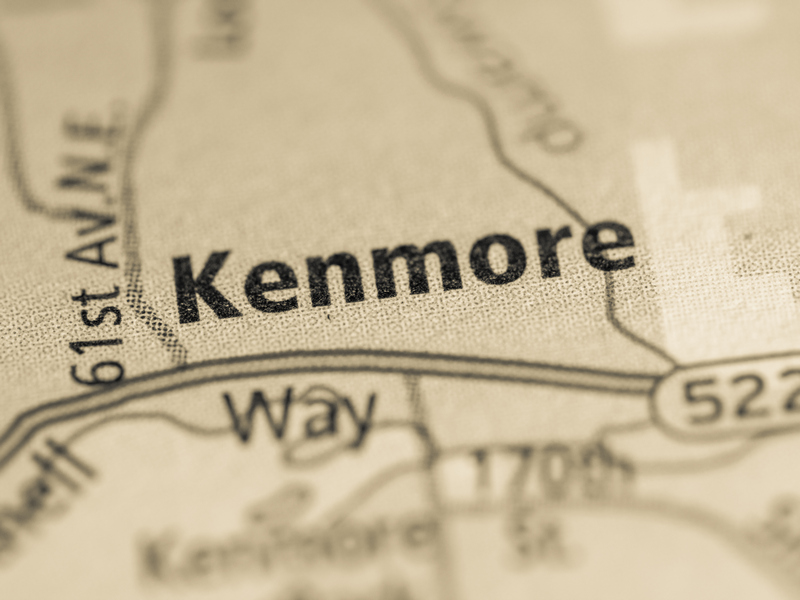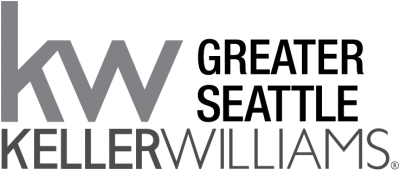
Welcome to Kenmore
You found the right website if you are searching for homes for sale in Kenmore, WA. Our website has EVERY Kenmore home for sale in Washington listed with Northwest MLS (NWMLS).
Kenmore is a city in King County, Washington, United States, along the northernmost shore of Lake Washington. It is a suburban bedroom community that is located at the mouth of the Sammamish River, approximately 12 miles (19 km) northeast of downtown Seattle and 2 miles (3.2 km) west of Bothell. The city’s population was 20,460 at the 2010 census. Kenmore is also home to the Kenmore Air Harbor, the largest seaplane-only passenger facility of its kind in the United States.
The city is connected to nearby areas by State Route 522 and the Burke-Gilman Trail, which both run east–west along the lakeshore. The city limits stretch north to the Snohomish County line and south to a border with Kirkland south of Saint Edward State Park and Bastyr University. Kenmore’s official city flower is the dahlia, the official city bird is the great blue heron, and the official city evergreen is the rhododendron.
Founded in 1901, Kenmore’s name comes third-hand from the Scottish village of Kenmore, via town founder home town of Kenmore, Ontario. John McMasters and his wife Annie arrived in Puget Sound circa 1889 from Canada, intending to establish themselves in the shingle-making trade. They opened a shingle mill on the northern shore of Lake Washington on land leased from Watson C. Squire. By 1903, Kenmore had established a school system and post office, but it did not formally incorporate as a city until August 31, 1998.
Early 20th century
Despite cargo railway service passing through the area as early as 1887 via the Seattle, Lake Shore and Eastern Railway, most access to the city in its early days was by boat, with regular ferry service to Seattle, Bothell, and Woodinville starting in 1906. The city later gained a passenger railroad stop. The first improved road connection to Seattle and Bothell—the Red Brick Road—opened between 1913 and 1914, with bus service following the laying of the bricks. As a result, Kenmore became a country retreat for weekend gardeners with local landowners selling off clear-cut “garden plots” to Seattlites with automobiles and green thumbs. It attracted at least two short-lived nudist camps during the 1920s.
Far more striking, however, was the impact of Prohibition. Kenmore quickly became famous in Seattle for its fine country dining and, more importantly, its fine country drinking, as a substantial illegal alcohol industry developed to meet the demands of Jazz Age Seattle nightlife. Although relatively close to Seattle proper thanks to Bothell Way’s status as one of the few improved roads then heading north from downtown it was nonetheless far enough out that Department of Revenue officers could, for the most part, ignore it.
The Blind Pig, a roadhouse on Shuter’s Landing at Lake Washington, was probably the most famous of the Kenmore speakeasys. At the lakeside, its illegal hooch could be dumped into the lake quickly and easily should it become necessary. Few people were fooled; the name itself was, in fact, a well-known slang term meaning “speakeasy”. But despite its notoriety, the Pig was not even the city’s most infamous saloon. Routine violence and fist-fights at the Inglewood Tavern earned that establishment an alternative name: the Bucket of Blood.
This archipelago of dining and entertainment – over 30 different restaurants, dance halls, bars, and clubs in a three-block area – remained a major part of Kenmore’s identity through the 1940s.
Post-war redevelopment
Once the Great Depression hit, Kenmore became home for a small settlement of workers under President Franklin D. Roosevelt’s Back to the Land program. Paid by the Works Progress Administration, a small number of workers settled in an area of northwestern Kenmore which became known as “Voucherville”, after the vouchers the WPA paid in lieu of a cash salary.
After the end of World War II, Kenmore became home to US Army Nike Hercules missile batteries as part of cold-war era defense plans. These nuclear-tipped anti-aircraft missiles were intended to protect Seattle and environs from Soviet bombers, should war break out. They were removed in 1974.
The post-war era largely transformed downtown. Kenmore Air Harbor, which today is one of the world’s largest seaplane-only airports, opened not far from the old location of the Blind Pig; Kenmore Air itself today runs a fleet of seaplanes serving waterside destinations throughout Cascadia. At the same time, Kenmore’s immediate proximity to Seattle—just two miles (3 km) north of modern Seattle city limits— made it an early target of post-war housing development. The first plats in the new Uplake neighborhood were sold in 1954. Housing development continued throughout the Kenmore area for the next several decades, mostly following the postwar suburban model; industrial and commercial growth followed quickly behind, and within a few decades, most of the old Kenmore dining and drinking had vanished, replaced by shopping centers, industrial development, and housing. However, one part of this new development brought its own history along with it: the Jewel Box Building in downtown Kenmore is a Seattle World’s Fair artifact, moved from Seattle Center to Kenmore after the end of the fair in October, 1962.
The city gained its first college in 1996, with the relocation of Bastyr University from Seattle onto the grounds of the former St. Edward Seminary.
Incorporation and downtown revitalization
Kenmore residents considered incorporation many times since the town’s founding; one such incorporation vote failed in 1954. The idea gained popular support through the 1990s, however, partly in response to the passage of the Washington State Growth Management Act of 1990. Formation of an exploration committee in 1995 led to a successful public vote shortly thereafter, and the city formally incorporated on August 31, 1998, 97 years after its original founding.
Following incorporation, the new government set about devising a local set of zoning codes and a downtown development plan with the intent of reviving and rebuilding the traditional core areas of the city. A significant component of this plan involves extensive use of land now owned by the city, in the area known within the plan as the Northwest Quadrant. An open invitation was extended to all architects and developers to submit development plans for this newly available area in December, 2005. The City Council chose to negotiate primarily with Kenmore Partners LLC in April 2006. Design plans were submitted to the city the following summer, with a conceptual overview made available to the public at the same time.
Kenmore’s oldest roads, now known most often by their county-assigned number systems, originally had more traditional names such as Cat’s Whiskers Road (61st Avenue NE), Squire Boulevard (later Red Brick Road, now Bothell Way/SR 522), and Remington Drive (NE 181st Street). These traditional names were reinstated in 2007 as secondary names in the downtown area.
Kenmore has several distinct neighborhoods. These include:
- Arrowhead, in southern Kenmore, on the west (or lake) side, saw its first house built in 1888. This was a small summer cabin; the oldest house still standing dates from 1929.
- Inglewood, in southern Kenmore, was first platted in 1953, with large-scale suburban development appearing by 1962.
- Lower Moorlands, in eastern Kenmore, saw its first house in 1904. The significant development occurring in this area after World War I included the 1927 landmark Charles and Elvera Thomsen House.
- Upper Moorlands, also in eastern Kenmore, saw initial building in 1938-1939 but stayed quite rural due to the lack of a good water system until suburban development arrived in the mid-1950s.
- Central (or downtown) Kenmore hugs Bothell Way and formed the original core of the city. Today it is Kenmore’s commercial and industrial core.
- Northlake Terrace, an early residential neighborhood just north of town, is now a mix of commercial and residential development. Much of the eastern portion of this area is to be redeveloped as part of the new Downtown Plan.
- Linwood Heights, in northwest Kenmore, was first founded as part of the “Back to the Land” movement during the Great Depression. Then derisively referred to as Voucherville, it has long since been redeveloped and is now largely suburban housing. Portions were annexed by Lake Forest Park in 1995, predating Kenmore’s formal incorporation.
- Kenlake Vista, in northern Kenmore, is post-war residential suburban housing.
- Uplake Terrace, a suburban neighborhood developed started in 1953.
- Kenmore Terrace
- Northshore Summit
While in large part now a bedroom community for workers commuting to nearby Seattle, Bothell, and Redmond, Kenmore retains a significant independent economic core centered around durable goods (construction materials, concrete, asphalt) and special trade contracting (construction, heavy construction, and highways).
Kenmore also hosts one of the last industrial ports on Lake Washington, at the mouth of the Sammamish River. Larger local businesses near the port include Rinker Materials’s Kenmore plant, Kenmore Ready-Mix (cements and asphalts, a division of Glacier Northwest), Pacific Topsoils (topsoils and landscape construction materials), Michael Homchick Stoneworks (stone fabrication and installation), Plywood Supply (lumber, plywood, and millwork, wholesale, retail, and company headquarters), and several others. As home to the James G. Murphy Company, one of the ten largest commercial/industrial auction houses in the United States, the city is also an auction center.
Significant non-durable-goods businesses include the headquarters of Kenmore Air, a large private seaplane-based airline; Alaska General Seafoods’s company headquarters and processing plant; Bastyr University, a school of naturopathic medicine.
Kenmore is part of the Northshore School District, and the local high school is Inglemoor High School. Inglemoor High School is known for its IB program. The nonprofit group Saint Edward Environmental Learning Center provides quarterly environmental education classes to the public in conjunction with Washington State Parks and Saint Edward State Park. They also operate the ALEAFA Model Public High School. The Kenmore Library Association, a volunteer group affiliated with the local library, plans and sponsors library programming.
Kenmore is home to Bastyr University, a leading private school of naturopathic medicine founded in 1978 and accredited by the Northwest Commission on Colleges and Universities (NWCCU). The city is also situated between the University of Washington’s main Seattle campus and UW Bothell and Cascadia College, both in nearby Bothell, Washington. Paved bike trails and express bus service connect the city to all three schools. The city also has a bus connection directly to Shoreline Community College.
Civic events and festivals
Major annual civic events include:
- The Kenmore Summer Concert Series, hosted at the former St. Edward Seminary, now Saint Edward State Park
- The annual Kenmore Art Show, a juried art exhibition sponsored by the Arts of Kenmore.
- The Kenmore Spring Egg Hunt
- Fourth of July Fireworks, a fireworks display at Log Boom Park, starting in 2006.
Media
Kenmore is served by Seattle-area media, but town and neighborhood events are covered primarily by the Bothell/Kenmore Reporter, a weekly and online newspaper published by Sound Publishing. Once a month, a Kenmore city government update is printed within the newspaper as a two- to four-page supplement. For its part, the city also sends out a quarterly eight-page newsletter to all residents discussing government activities, development project status reports, budgetary summaries, and a community events calendar.
Family Circle Magazine selected Kenmore, Washington as one of the “10 Best Towns for families” in their August 2009 edition. Seattle Magazine also ranked Kenmore as the best Seattle-area neighborhood or surrounding city for 2008–2009.
Parks
Not all parks within city limits are operated by city government; the Burke-Gilman Trail is a King County park, and St. Edward State Park is operated by the Washington State Parks and Recreation Commission. Extant parks within city limits include:
- Burke-Gilman Trail, a King County park which, combined with the Sammamish River Trail, connects Marymoor Park just outside downtown Redmond through the downtowns of Woodinville, Bothell, Kenmore, and Lake Forest Park to Gas Works Park in Seattle and points west. Several other trails and bike routes branch off of this trail backbone;
- Squires Landing Park, soon to be re-developed; along the Sammamish River;
- Linwood Park, a small 3-acre (12,000 m2) park in northwest Kenmore with grass commons, playground, and picnic tables;
- Moorlands Park, a 5-acre (20,000 m2) park including baseball and basketball facilities in southeastern Kenmore;
- Rhododendron Park, formerly Kenmore Park, a 13-acre (53,000 m2) park planted with hundreds of species of rhododendron, many rare;
- Saint Edward State Park, the largest park in Kenmore at 365 acres (1.48 km2); it includes over half a mile of undeveloped Lake Washington shoreline, the historic Saint Edward Seminary and gymnasium, and the Carole Ann Wald Memorial Pool (closed indefinitely), a year-round indoor swimming facility, which has been the home practice pool for both Inglemoor High School Viking swim teams and Seattle Synchro, the Seattle Synchronized Swim Team; a playground ranked 2nd in 2009 by KING5 TV’s Best of Washington competition.
- Swamp Creek Park, along the Sammamish River, consists of city-purchased farmland currently left in an undeveloped state;
- Tracy Owen Station at Log Boom Park, Kenmore’s smaller Lake Washington park, includes 16 acres (65,000 m2) of shoreline and a large walking dock extending out into the lake;
- Wallace Swamp Creek Park, 17 acres (69,000 m2) surrounding Swamp Creek in northeast Kenmore, which features some walking trails.
Kenmore has a Council–manager government, being governed by a city council consisting of seven councilmembers, each of whom is elected to a four-year term. Council elections are held every two years, with either three or four positions standing, depending upon year. All positions are nonpartisan and at-large, elected by the entire city voting population. The Council passes ordinances, sets policies, and elects from its own membership a Mayor and Deputy Mayor for two-year terms. The Council holds regular meetings on the second, third, and fourth Mondays of each month, with special meetings added as needed.
Day-to-day operations of the city are administered by a City Manager, hired by the City Council. City code also stipulates the hiring of a full-time City Clerk. Major committees included in Kenmore Municipal Code are the Landmarks and Heritage Commission, the Planning Commission, and the Library Advisory Board.
City of Kenmore police duties are subcontracted through the King County Sheriff’s Office; the original City of Kenmore Fire Department’s duties were expanded via agreement with nearby Lake Forest Park, becoming the Northshore Fire Department.
Shortly after its incorporation in 1998, the city passed a moratorium on cardrooms and other gambling establishments; at the time, Kenmore had a single cardroom, which was later grandfathered into an expanded ban in 2003. After the ban was struck down and reinstated, the issue was decided in a public referendum in September 2004 that did not pass a ban on cardrooms, but the city council kept its ban in place. The moratorium was overturned by the King County Superior Court following a lawsuit from the cardroom’s owner, but a new ban was passed in 2005 and appealed to the federal Ninth Circuit, where the ban was upheld. Following negotiations between the city, the state gambling commission, and the owner, the cardroom closed in 2009.
Police
Kenmore contracts with the King County Sheriff’s Office for police services. Deputies assigned to Kenmore wear city uniforms and drive patrol cars marked with the city logo. There are currently 9 patrol officers, one traffic officer, one storefront officer, and one chief assigned full-time to the city.





